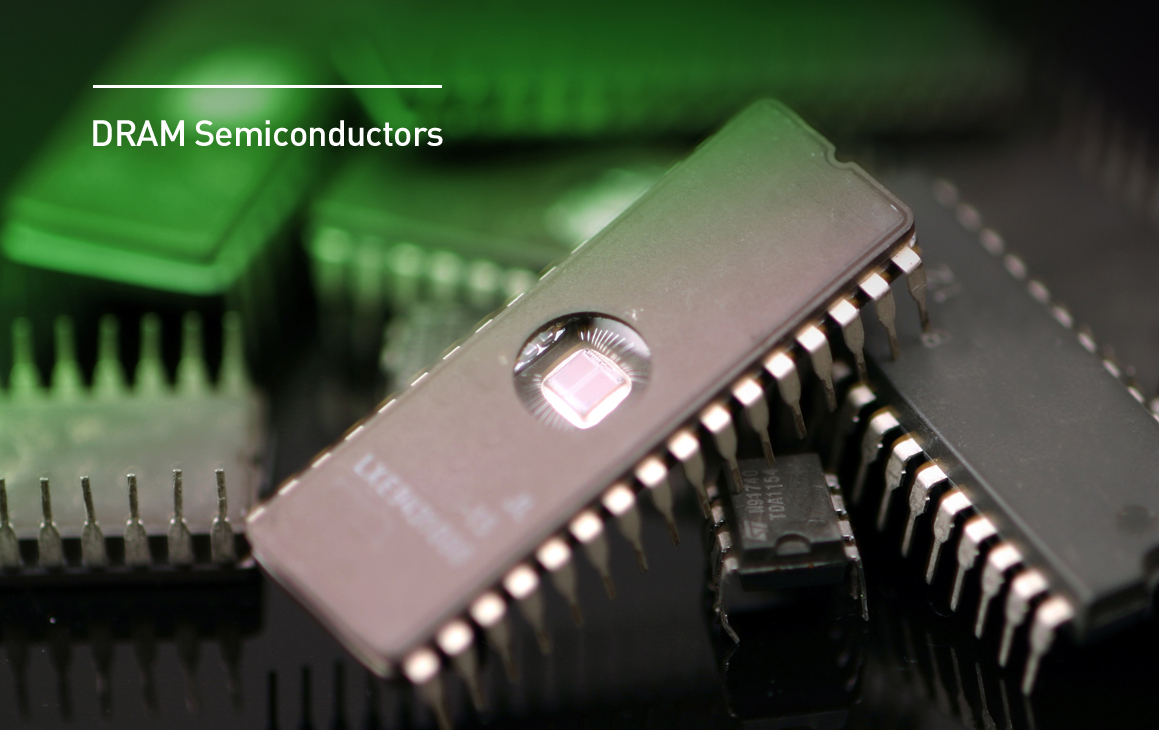

In commemoration of the 70th anniversary of Korean independence from Japan,
the Ministry of Science, ICT and Future Planning(MSIP) has announced 70 representative achievements in science and technology,
selected by the Representative Achievement Selection Committee,
consisting of the chairperson of the National Science and Technology Council and experts from various sectors.
Among the 70 achievements that contributed to realizing the “Miracle on the Han River” and
leading the national economic growth are included TDX-1, DRAM, CDMA, and WiBro developed by ETRI.
The following provides some details on the history of DRAM(Dynamic Random Access Memory).
From 4M DRAM to 64M DRAM
The key element in the semiconductor industry is developing
next-generation products with a greater degree of integration prior to other competitors.
Beginning as a second mover in the industry, Korea finally succeeded in developing 4M DRAM slightly earlier than
advanced countries, thanks largely to the joint research conducted by industries, academia, and research institutes.
The nation joined the ranks of leading countries in the semiconductor industry
when it developed 16M DRAM in 1991, and began in 1992 to assume the top market share
in the global memory semiconductor market with the world’s first development of 64M DRAM.

A Foundation for Semiconductor Powerhouse
The 4M, 16M, and 64M DRAM are all ultra-large-scale integration(ULSI) semiconductors developed
through the collaboration efforts of industries, universities, and research institutes commencing in 1986 and led by ETRI.
This laid a foundation for Korea’s growth into a global leader in the semiconductor industry,
allowing the nation to build ICT infrastructure and nurture relevant industries.
The development of semiconductors also played a critical role in transforming Korea’s labor-intensive
and capital-intensive export industries into technology-intensive industries.

Largest Amount of Exports with a Single Item
The success of semiconductor development has brought a significant economic impact.
Korea’s semiconductor exports were worth only about USD 70 million
at the time Korea launched a joint development project for 4M DRAM,
but later reached USD 8.32 billion in 1993, recording the largest amount of exports enabled by a single item.
Three major semiconductor manufacturers in Korea became global leaders in the sales of DRAM
and jointly create a ripple effect of economic value worth USD 15 billion.

Spirit of Cooperation
The development of 4M DRAM was promoted as a joint initiative participated by the industries, universities,
and research institutes, under support from the government.
All participants in the joint development agenda shared a sense of pride for taking part in Korea’s largest
collaborative research project for the development of state-of-the-art technology.
In addition, their concerted research endeavors aimed at conquering the global markets helped them attain
the goal earlier than planned and achieve greater performance than expected.













